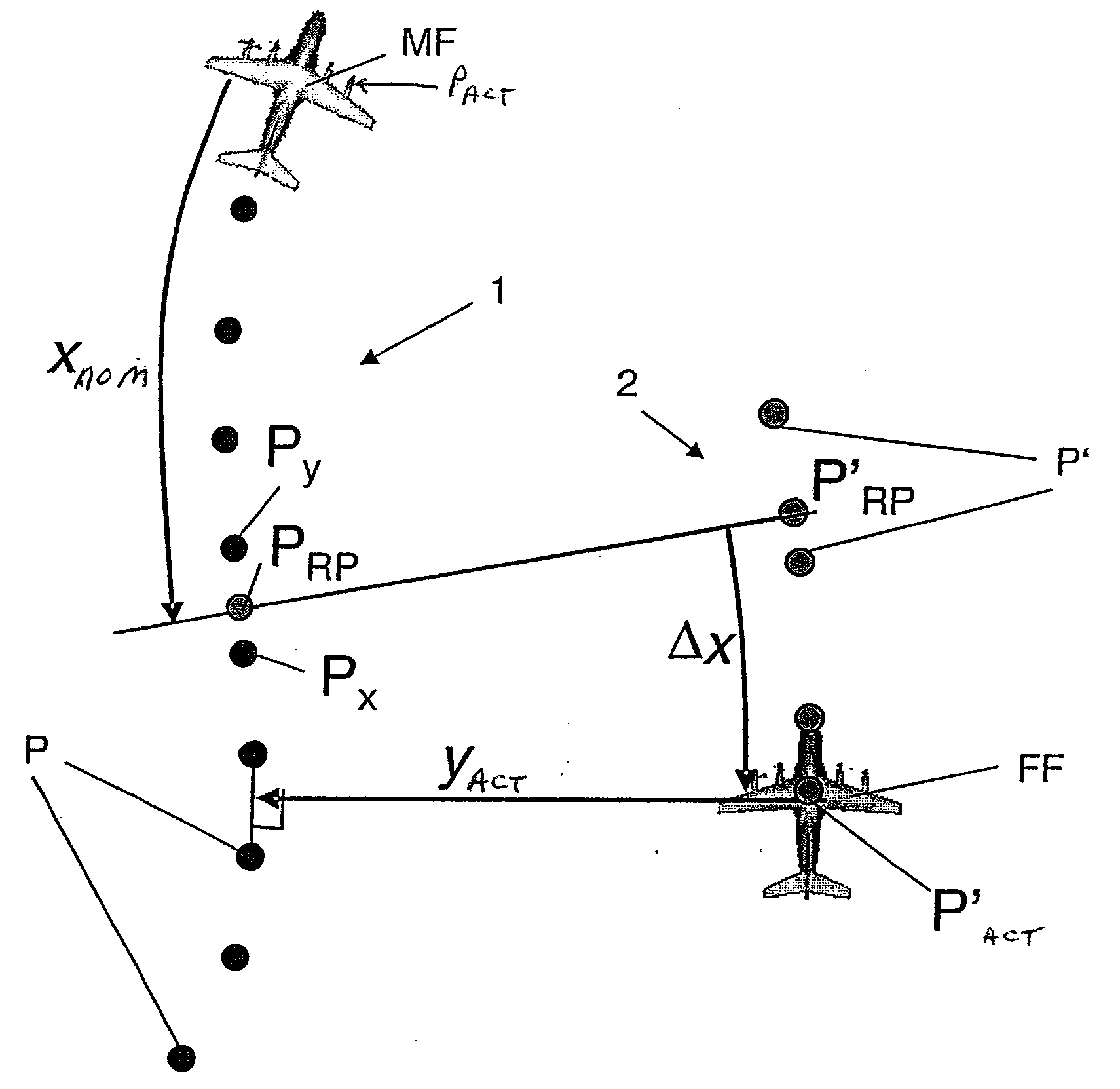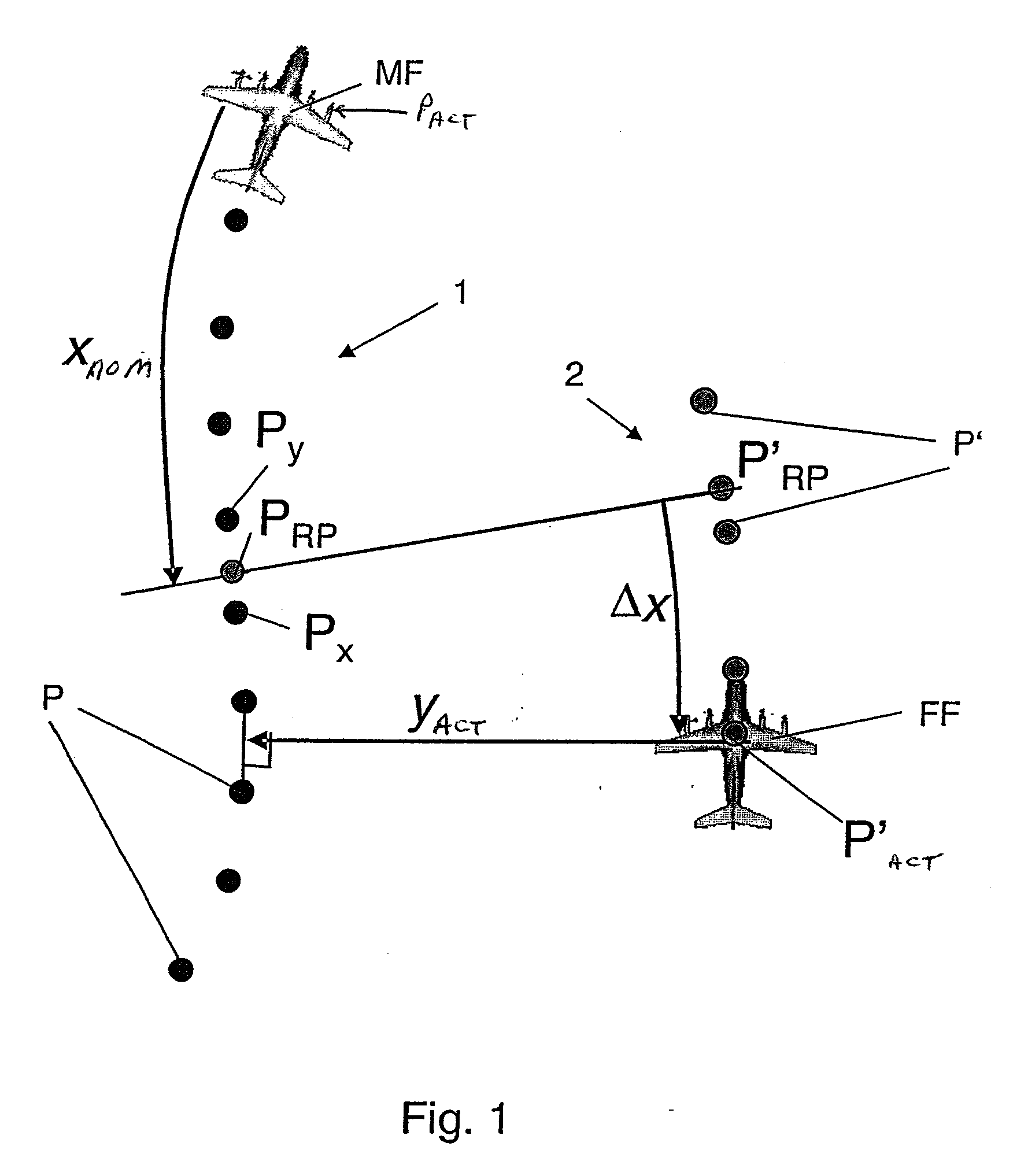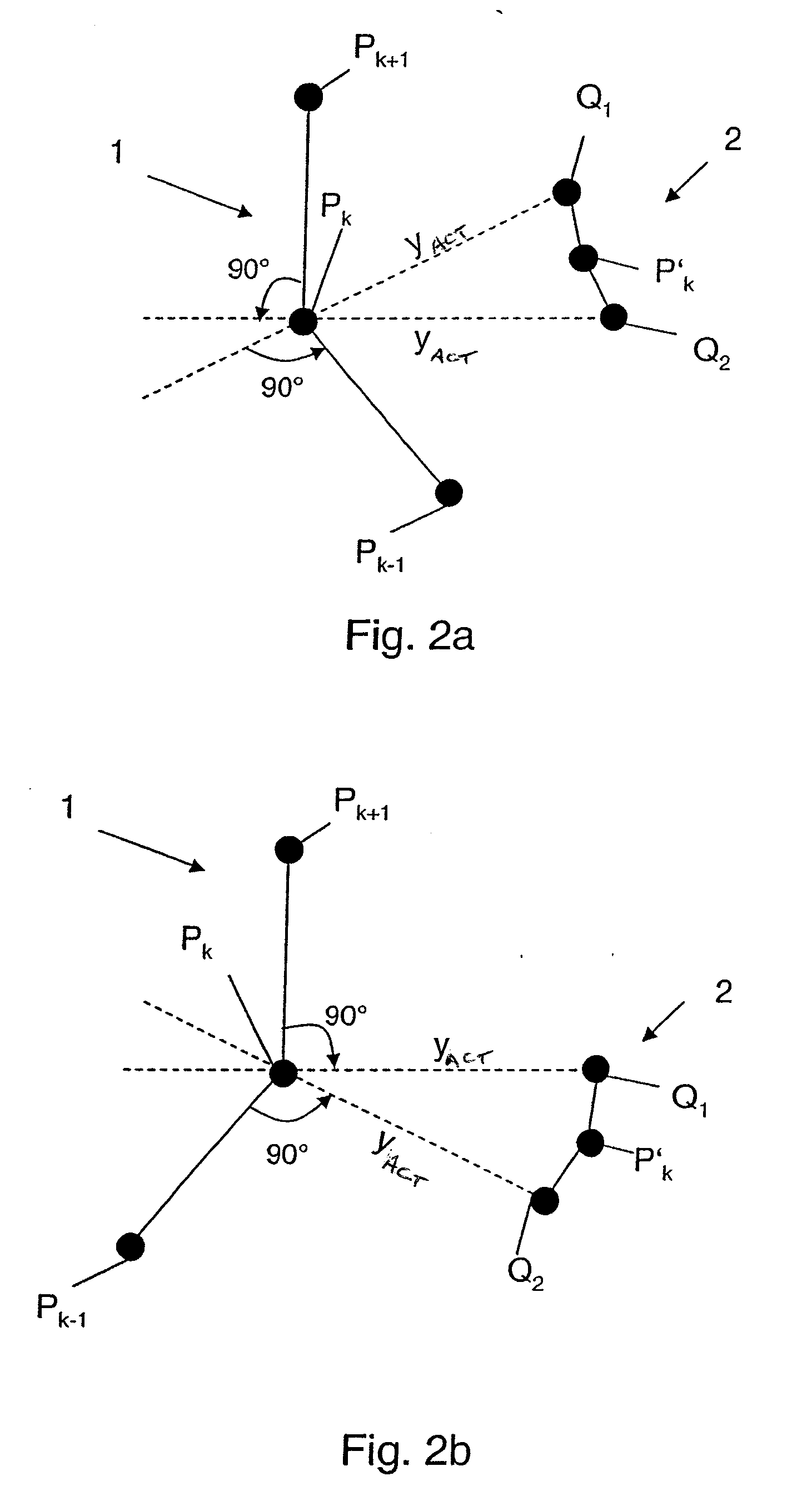Method for Flight Control of a Plurality of Aircraft Flying in Formation
a technology of flight control and aircraft, applied in the direction of traffic control systems, position/direction control, instruments, etc., can solve the problem that the method on which the system is based is not very suitable for a use during highly dynamic flying maneuvers
- Summary
- Abstract
- Description
- Claims
- Application Information
AI Technical Summary
Benefits of technology
Problems solved by technology
Method used
Image
Examples
Embodiment Construction
[0034]In a planar representation, FIG. 1 shows a trajectory 1 of a lead aircraft MF with support points P, as well as an estimated trajectory 2 of a following aircraft FF with support points P′ that were calculated based on the support points P on the trajectory 1 of the lead aircraft.
[0035]Reference symbol Xnom indicates the predetermined relative longitudinal distance between the lead aircraft MF and the following aircraft FF. The lateral actual distance between the lead aircraft MF and the following aircraft FF is marked yact. (The predetermined vertical distance is not shown.) The longitudinal nominal distance Xnom is expediently determined before the aircraft form a formation, for example, by the pilots. A corresponding situation applies to a predetermined vertical and lateral nominal distance. The distances can be indicated either in time units or distance units.
[0036]For the determination of a support point PRP for the reference point on the trajectory of the lead aircraft, t...
PUM
 Login to View More
Login to View More Abstract
Description
Claims
Application Information
 Login to View More
Login to View More - R&D
- Intellectual Property
- Life Sciences
- Materials
- Tech Scout
- Unparalleled Data Quality
- Higher Quality Content
- 60% Fewer Hallucinations
Browse by: Latest US Patents, China's latest patents, Technical Efficacy Thesaurus, Application Domain, Technology Topic, Popular Technical Reports.
© 2025 PatSnap. All rights reserved.Legal|Privacy policy|Modern Slavery Act Transparency Statement|Sitemap|About US| Contact US: help@patsnap.com



